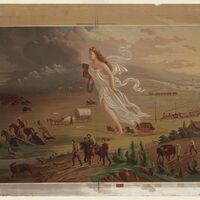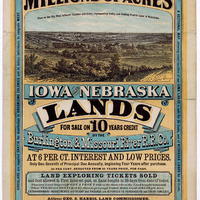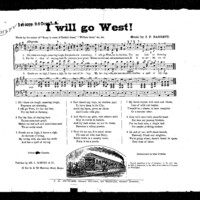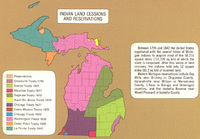Historical Context
European Arrival
Since the arrival of Europeans in North America, the indigenous peoples of what is now the United States of America and Canada have had complicated relationships with these newly arrived settlers and traders. European traders wanted access to the lands occupied by indigenous peoples in order to cultivate goods such as furs that could then be sent back to Europe for a profit.
However, with the settlers came missionaries with the goal of converting as many indigenous people as possible to Christianity. In the eyes of these settlers, the only way indigenous peoples’ souls could be saved was by denouncing their religion and converting to Christianty. Oftentimes, these missionaries aimed to not only change the religion of indigenous people, but completely eliminate indigenous customs, rituals, and languages.
Treaty systems
As more European settlers began arriving in North America, it became clear to the colonial powers that they needed more territory for their rising populations. As a result of this need, colonial powers began a strategy of acquiring Indigenous owned land through treaties. Oftentimes, tribal leaders were coerced or forced to sign over their lands and relocate to newly formed reservations. Reservations were usually established on land that wasn’t suited for farming or offered little in resources needed to support a community. In addition, many of the treaties signed between tribes and the United States were not honored by the federal government. As a result, some tribes referred to treaties as “bad paper” (Smithsonian, 2015).
Assimilation
The efforts to assimilate indigneous peoples that began with missionaries continued on into the 20th century. Some tribes made efforts to assimilate into white culture in the hopes that they would be able to keep their lands and maintain a stable footing with the American government. The Cherokee, Chickasaw, Choctaw, Muscogee, and Seminole tribes based in the Southeast United States were often referred to as the “Five Civilized Tribes” because of their efforts to adopt white customs.
The Indian Problem/Indian Removal Act
One of the most infamous results of the treaty and reservation systems came in 1830 when President Andrew Jackson signed the Indian Removal Act. This law was written to forcibly relocate the indigenous peoples to reservations west of the Mississippi River in order to make more room for white settlers. Despite their efforts to assimilate, even the “Five Civilized Tribes” were ripped from their homes and forced to endure a grueling journey to the reservations as a result of this legislation. Tragically, this forced removal of these tribes resulted in thousands of deaths on what later became known as the “Trail of Tears.”
Manifest Destiny
Beginning in the mid 19th century, the idea of Manifest Destiny was becoming more popular in the United States. Manifest Destiny was the idea that not only was the United States justified in its conquest of North America, but that it was inevitable. The idea that American settlers would bring farming, education, and technology to the west became increasingly popular and was used to justify the actions of the United States government such as the Indian Removal Act and the Mexican American-War.
Boarding Schools
The assimilation efforts that began with missionaries continued into the 20th century through federally created “Indian Boarding Schools.” The primary goal of these schools was to completely erase indigenous culture and instead teach American ideals, traditions, and religion. The boarding school system was modelled after the Carlisle Indian Industrial School that opened in 1879 under the direction of Lieutenant Richard Henry Pratt. Pratt’s motto of “Kill the Indian, spare the man” was prevalent throughout every aspect of the schools and started with forcing students to speak only English, cut their hair, and dress in the American style. If students were caught speaking their own language or misbehaved in any way they would face harsh punishment and often endured abuse.
Attendance at these schools peaked in the 1970s with an estimated 60,000 students enrolled in 1973 (Smith, 2006). It wasn’t until 1978 with the passage of the Indian Child Welfare Act that families were finally given the right to refuse the placement of their child into these boarding schools.













